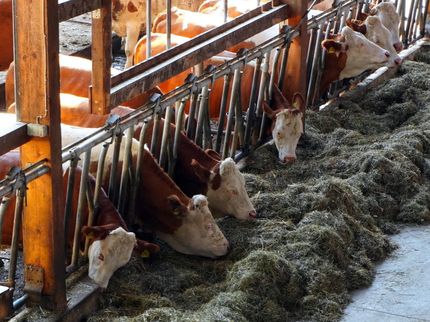New models needed for food system transformation
How agricultural scientists formulate research questions, and the need for new funding models for climate-smart agriculture.
According to the paper titled Enacting theories of change for food systems transformation under climate change, published in Global Food Security, food systems are responsible for a third of global greenhouse gas emissions from human activity, and agricultural yields are at risk due to climate change impacts. And yet, there is not a clear picture of the different elements of the agricultural research and food production ecosystem.

CIAT / Georgina Smith
To help address this, the paper’s authors implemented a survey of 262 attendees of the 2019 Global Science Conference on Climate-Smart Agriculture (CSA) in Bali, Indonesia, across researchers, funders and end-users, to assess the key leverage points needed to address to radically shift the food system to a new place.
Dhanush Dinesh, head of partnerships and outreach at CGIAR Research Program on Climate Change, Agriculture and Food Security (CCAFS) and a CIAT researcher, says that one of the major findings was that to achieve climate and sustainability goals, farmers should be seen as partners in research and contribute as well as being beneficiaries.
Shift in Thinking
Dinesh says that traditionally farmers have been “policy takers”, not “policy makers.”
“Researchers can design new tools for research but to help farmers, we need to know what their financial and policy needs are,” he said, “All this is a shift in power from researchers as the powerful knowledge providers to a place where funders, farmers and researchers everyone is equal and shaping it in an equitable way… It's not happening now , but we are recognising this needs to change.”
Bruce Campbell, director of CCAFS, and CIAT researcher says that a large amount of the research effort needs to shift to an action mode – participatory action research or to put it more simply “learning by doing.”
“By working closely with farmers to trial things they are interested in testing, researchers can present a basket of possibilities for testing and farmers can select what they want to test and also bring their own knowledge to what should be tested,” he said.
Campbell says experience indicates that the research can then go in unexpected directions.
“For example, research may have planned to look at the dominant maize crop, but on speaking with the farmer the research shifted to examining intercropping, with more effort focussed on the intercrop than the maize crop,” he said.
Novel Funding Models
Dinesh said that another key aspect identified for the success of future food systems was novel funding models. He said that major international bank RaboBank had already designed a new fund called AGRI3 where the government of the Netherlands put funds in, reducing the risk to the bank.
“They can then loan to the farmers to implement climate-smart agriculture, but to deliver at scale, they need to develop monitoring systems,” he said.
Laurens Klerkx, Professor of Agrifood Innovation and Transition at Wageningen University in the Netherlands and a co-author on the paper, said that some examples of novel funding models that improve outcomes for farmers and researchers include models with joint agenda setting, in which farmers can decide on proposal focus, priority setting, and decision making and induce ownership.
“These include levy-funded R&D systems, farmer jury’s, etc.” Klerkx said adding that although these are not entirely novel they may be in the agricultural for development (AR4D) context.
Campbell says blended finance models can support high-impact transformative projects in sectors that are initially unable to attract commercial finance but have the potential to become commercially viable over time.
“There is a nice example in Rwanda with Africa Improved Foods: They put up a food processing plan for the production of nutritious foods (e.g. cereals) with the raw material sourced from smallholders and the first phase of the project costs approximately $65 million in capital expenditure and working capital,” Campbell said, “This would not have taken off without a blended finance model, with a mixture of funding sources, some concessional… It also included technical support to farmers to rise to the challenge of producing high-quality products for the value chain.”






























































